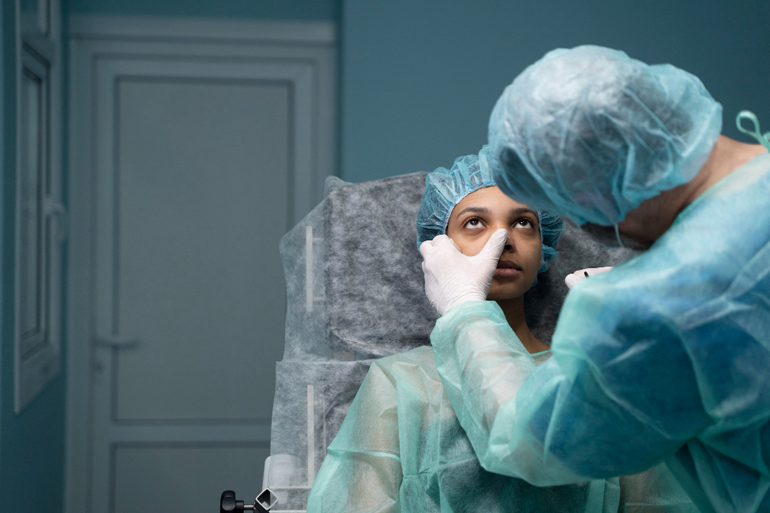Observing Cataract Awareness Month: What is Cataract?

Every year, Cataract Awareness Month is observed to educate the public about cataracts, their impact on vision, and the importance of early detection and treatment. Understanding what is cataract, its symptoms, types, treatment options, and post-surgery care is crucial for maintaining good eye health and preventing vision loss.
What is Cataract?
What is cataract? Cataract is a condition where the natural lens of the eye, which is located between the iris and the pupil becomes cloudy. This condition leads to loss of vision and is the leading cause of blindness globally. Cataracts are usually gradual and may occur in one or both eyes depending on the situation. They obstruct vision in that they distort light and prevent it from converging on the eye to form a clear image or makes vision appear hazy or faint.
Symptoms of Cataract
The symptoms of cataract can vary depending on the progression of the condition. Common symptoms include:
- Blurry or cloudy vision
- Difficulty seeing at night
- Sensitivity to light and glare
- Seeing halos around lights
- Frequent changes in eyeglass or contact lens prescriptions
- Fading or yellowing of colors
- Double vision in one eye
If you notice any of these symptoms, it is important to schedule an eye exam to determine if you have cataracts or another eye condition.
Types of Cataract
There are several types of cataract based on their location and development within the eye:
- Nuclear Cataracts: These form in the center of the lens and are often associated with aging.
- Cortical Cataracts: These affect the edges of the lens and are characterized by white, wedge-like opacities.
- Posterior Subcapsular Cataracts: These develop at the back of the lens and can interfere with reading vision and create glare or halos around lights.
- Congenital Cataracts: Present at birth or develop during childhood, often due to genetic factors or infections during pregnancy.
Cataract Treatment
The primary cataract treatment is surgery, which involves removing the clouded lens and replacing it with an artificial intraocular lens (IOL). This procedure is highly effective and is one of the most common surgeries performed worldwide.
Cataract Surgery
Cataract surgery is usually an outpatient procedure performed under local anesthesia. The surgeon makes a small incision in the eye to remove the clouded lens and then inserts the IOL. The procedure typically takes less than an hour, and patients can go home the same day.
Precautions After Cataract Surgery
Following precautions after cataract surgery is essential for a smooth recovery and to prevent complications. Here are some key precautions:
- Avoid rubbing or pressing on the eye.
- Use prescribed eye drops to prevent infection and inflammation.
- Wear an eye shield while sleeping to protect the eye.
- Avoid strenuous activities and heavy lifting for a few weeks.
- Refrain from swimming or using hot tubs to reduce the risk of infection.
Adhering to these precautions can help ensure a successful recovery and optimal vision outcomes.
Conclusion
Cataract Awareness Month is an excellent opportunity to educate yourself and others about what is cataract, its symptoms, types, and treatment options. Regular eye exams are crucial for early detection and effective management of cataracts. If you or a loved one experience any symptoms of cataract, consult an eye care professional at itees eye Hospital promptly. With timely intervention and proper care, cataracts can be effectively treated, restoring clear vision and improving the quality of life.